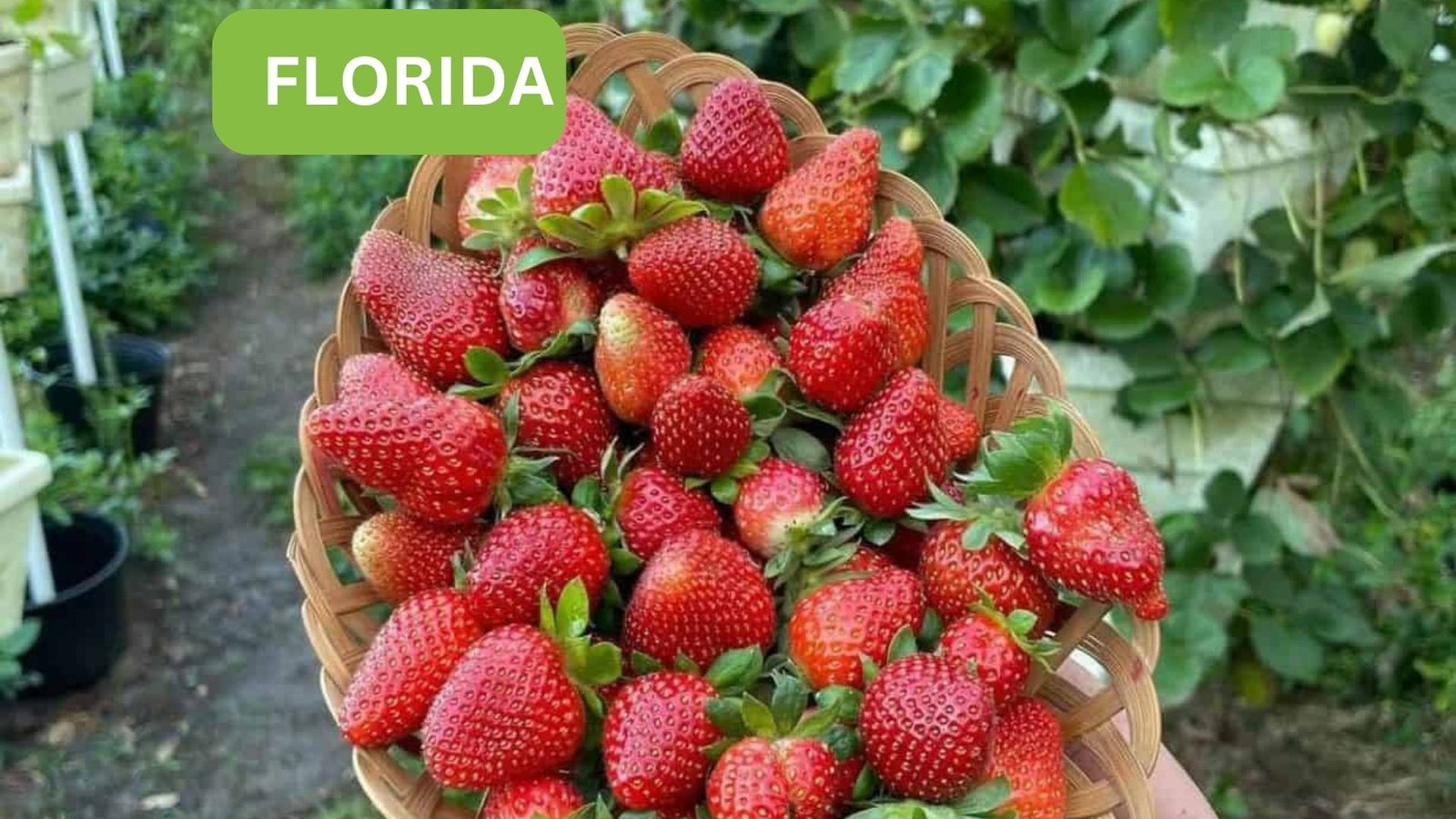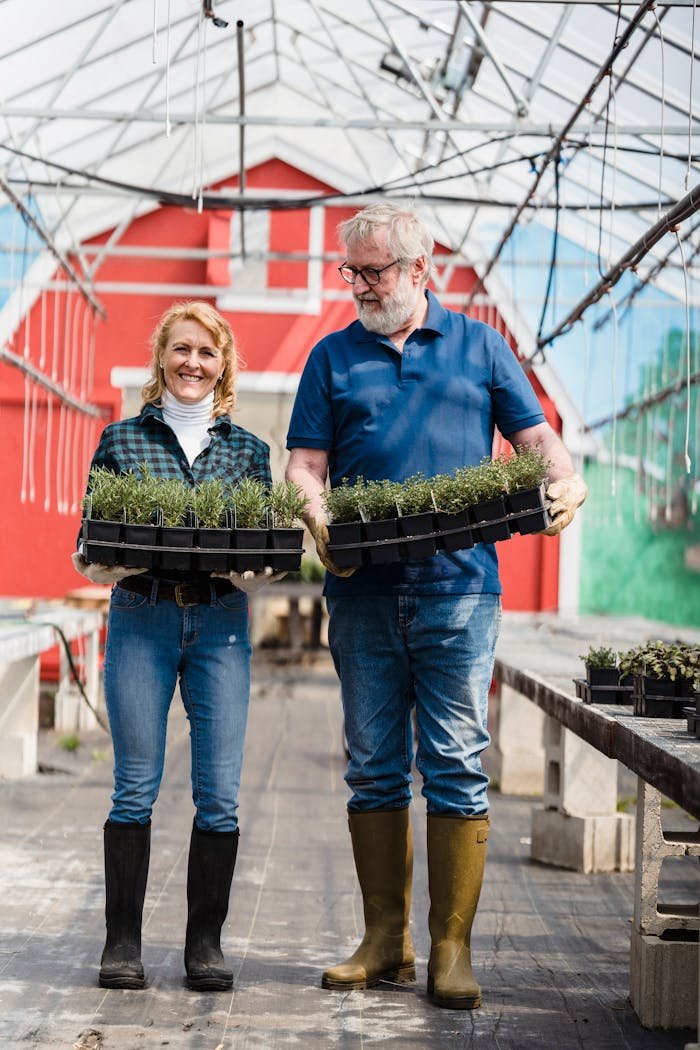Florida’s warm, sunny climate makes it a great place for growing strawberries, particularly in the colder months. If you’ve ever wondered how to grow strawberries in Florida, you’re in the right place. This resource is filled with advice and knowledge to help you grow sweet, Sweet berries from your own garden.
Whether you’re new to home gardening in Florida or Have done this before learning the right timing, soil care, and plant selection is key. We’ll explore the best planting seasons, Plant care tips, and ways to avoid common mistakes. From Florida-friendly gardening methods to natural strawberry cultivation, this guide covers it all. Get ready to enjoy a successful Florida strawberry season like never before! How to grow strawberries in Florida is very simple method .
Understanding Florida’s Strawberry Growing Season

The Florida strawberry season runs from November to April. This is different from most other places in the U.S. where strawberries grow in spring. Florida’s mild winters allow growers to plant in the fall and enjoy fruit during the cooler months. In fact, Florida is one of the top producers of Florida winter crops like strawberries because of its perfect off-season window.
Strawberry growing zones in Florida vary slightly by region. North Florida usually starts planting in early October. Central Florida can begin in mid-October, and South Florida does best if planting starts in late September. Early planting gives your berries more time to grow before heat and humidity rise in late spring, which often kills the plants. This is why perennial vs annual strawberries matter here. In Florida, strawberries are treated as annuals—they only grow for one season.
Choosing the Best Strawberry Varieties for Florida
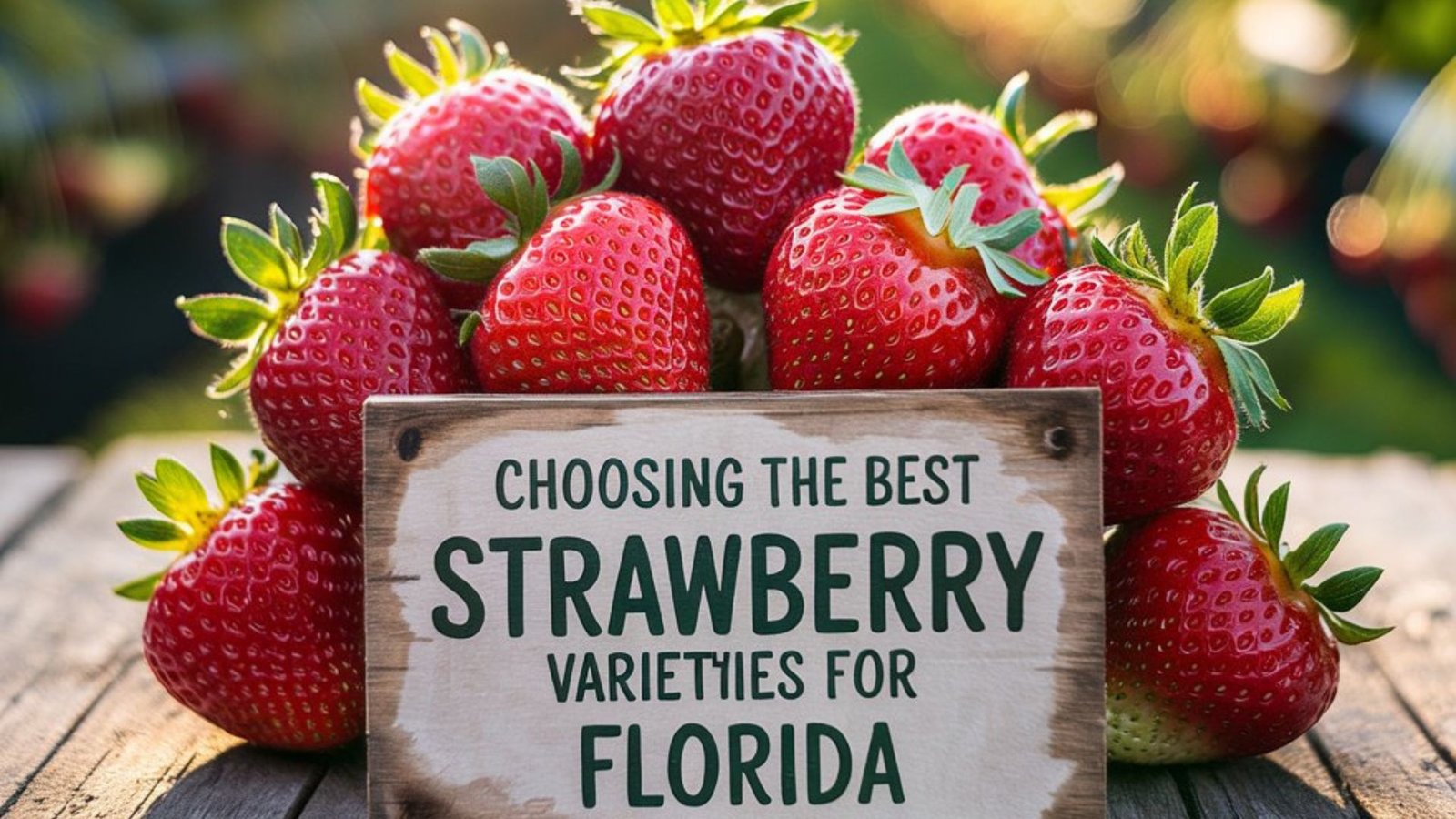
Not all strawberry types thrive in Florida’s climate. The best strawberries to grow in Florida are ones that can handle short days, high humidity, and quick growth. Among the top performers are the Festival strawberry variety, Florida Radiance strawberry, and a newer option called ‘Brilliance.’ These are high-yield strawberry varieties bred specifically for Florida’s climate.
Avoid using seeds from grocery store strawberries. These may not grow true to type, especially since many strawberries are hybrids. For best results, use bare-root strawberry plants or nursery plugs. Strawberry transplant care is easier with these because they bounce back fast and grow more evenly. When choosing, make sure you buy certified disease-free stock from a trusted supplier.
Preparing the Ideal Soil and Garden Bed
Healthy soil makes healthy berries. For proper strawberry soil preparation, make sure the ground drains well. If water pools in your garden, your plants will rot. Raised garden beds or mounds are ideal. Many Florida gardeners use raised beds for strawberries because they allow for better humidity and drainage control. You can also use Strawberry tower systems in tight spaces.
The perfect soil pH for strawberries is between 5.5 and 6.5. You can test your soil at home or send it to your local extension office. Add organic compost and manure before planting. You should also mix in azymite soil amendment to boost micronutrient levels. This mineral-rich powder helps feed your plants and leads to strawberry yield optimization.
How to Plant Strawberries in Florida (Step-by-Step)
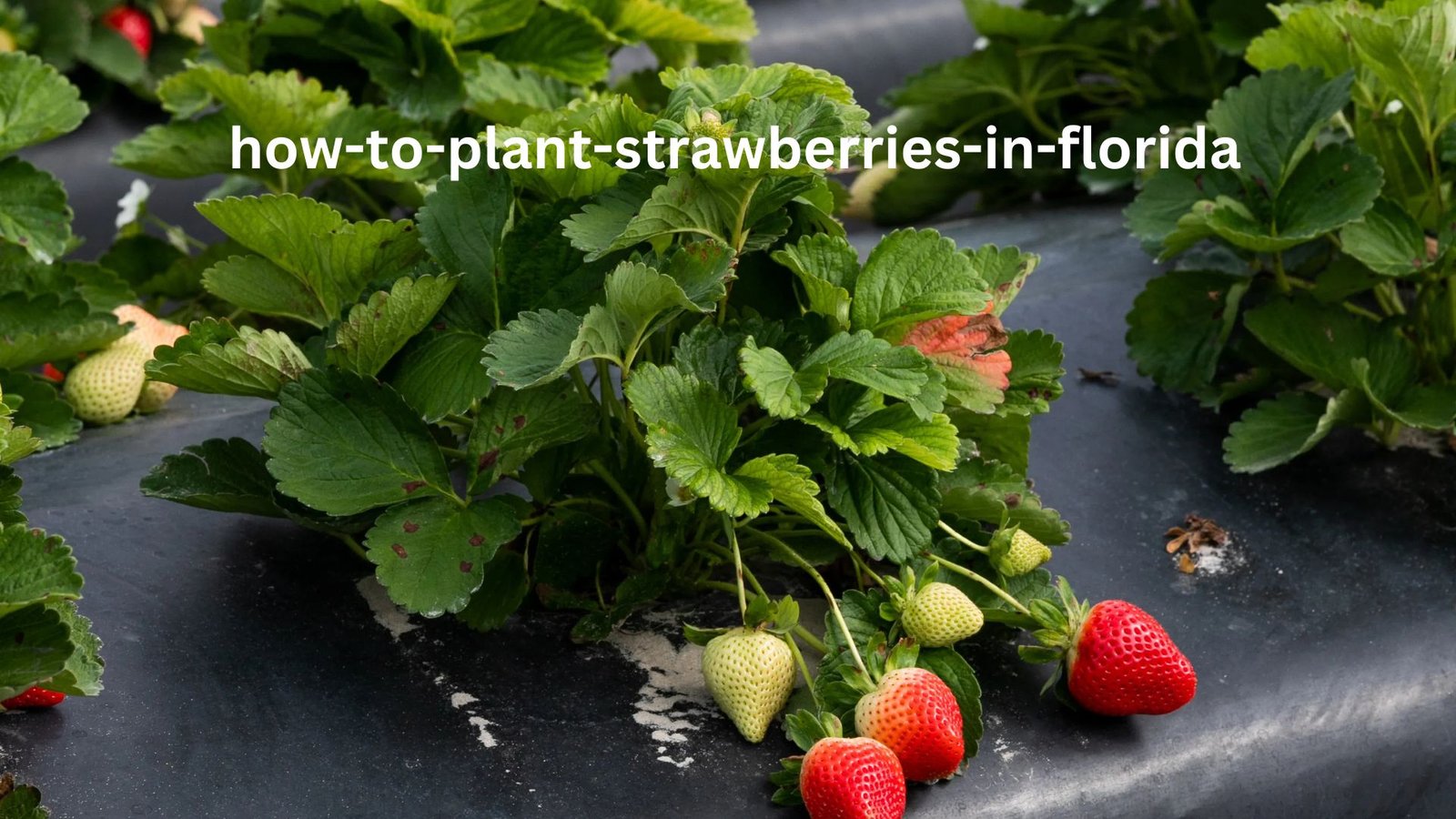
If you’re wondering how to plant strawberries in warm climates, the steps are straightforward, yet proper timing is crucial. Start with healthy bare-root strawberry plants or plugs in the early fall. Dig a shallow hole and spread the roots gently. The crown of the plant (where leaves meet the roots) should sit at soil level—not too deep, not too high. How to grow strawberries in Florida is very easy method.
Space your plants about 12 inches apart. This allows good airflow and reduces disease. Water lightly after planting, and cover the area with straw or pine needles. This mulch helps with fruit rot prevention, keeps weeds down, and stabilizes soil moisture. Avoid planting in the same spot year after year to prevent soil diseases. Crop rotation is key in Florida-friendly gardening.
Watering, Sunlight, and Fertilizer Requirements
Strawberries need lots of light. Try to give them 8 hours of full sun daily. Without enough light, your plants won’t flower well and fruit will stay small. Water them deeply but not too often. The soil should stay moist but never soggy. This keeps the roots healthy and helps avoid root rot.
Stick to a regular strawberry fertilizer schedule. The University of Florida recommends a 10-5-10 fertilizer for strawberries. This mix supports strong growth and fruit production. You can also use organic strawberry farming methods by using compost teas and natural blends. Reapply nutrients every 4 to 6 weeks. Don’t forget to read the instructions on the label to avoid overfeeding.
Caring for Strawberry Plants Throughout the Season
Once your plants are growing, they’ll need a little attention. Pinch off runners early on so that your plants focus on making fruit instead of new leaves. This is part of good Strawberry transplant care and leads to better yields. You’ll also want to keep mulch fresh and remove any weeds regularly.
As flowers appear, check for pollination. Insects like bees do most of the work here. The strawberry flowering and fruiting stages usually begin about 6 to 8 weeks after planting. During this time, keep watering steady, and watch for signs of stress or pests. Healthy plants will grow fast and bloom regularly.
Common Pests and Diseases in Florida Strawberry Gardens
Florida’s heat and moisture create the perfect environment for pests and fungal issues. One of the most common Strawberry diseases is Botrytis cinerea, also known as gray mold. It shows up as fuzzy, grey spots on ripe fruit. Powdery mildew and anthracnose are also threats, causing leaf curling or blackened berries.
For pest control, keep an eye out for spider mites, aphids, and thrips. These tiny bugs can cause huge problems if not treated. Natural pest control (neem oil, insecticidal soap, ladybugs) is your best friend here. Spray neem or soap weekly and release ladybugs if needed. A clean, well-ventilated garden will reduce pest pressure naturally.
Growing Strawberries in Containers and Towers (Optional Methods)
You don’t need a huge yard to grow berries. Many people use Strawberry tower systems or pots. This is great for backyard fruit gardening in Florida and urban homes. Pick a large pot with drainage holes. Fill it with loose soil and compost, and place the plants on the sides and top.
These systems are also great for hydroponic strawberries in Florida. You can buy ready-to-use hydro towers or DIY with buckets. Growing off the ground means fewer soil diseases and easier harvesting. Plus, kids love helping out with vertical strawberry gardening setups on patios or balconies.
Harvesting and Storing Your Strawberries
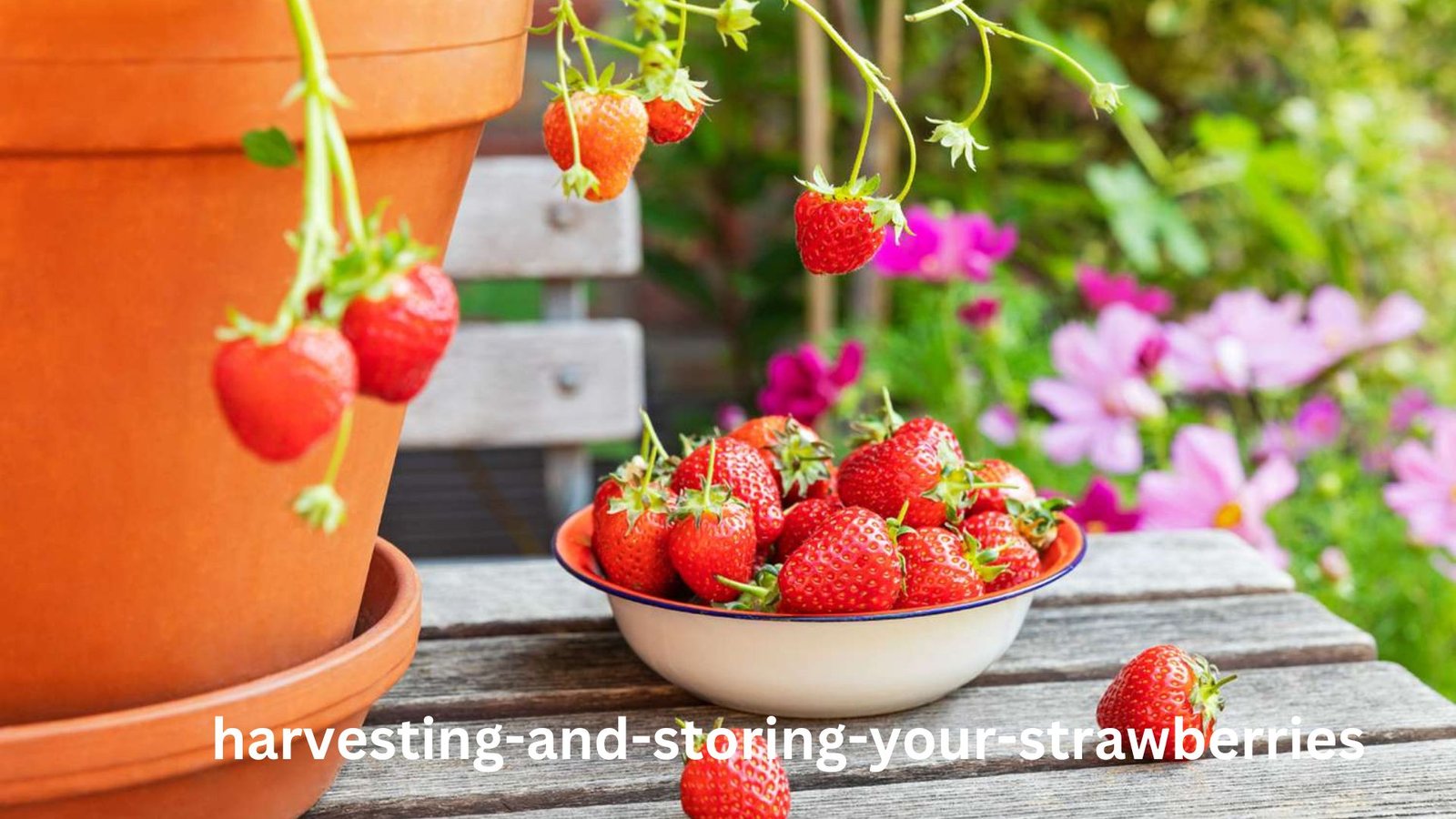
The best harvest time for strawberries in Florida is between December and March. Harvest berries when they’re fully red with no green tips. Strawberries don’t ripen after picking, so timing matters. Gently twist the berry off with the stem still attached. This helps keep the fruit fresh longer.
For storage, never wash berries before refrigerating. Moisture speeds up mold. Place them dry in a paper-towel-lined container. You can also use strawberry storage and freezing methods like flash freezing. Wash, dry, remove stems, and freeze them flat before transferring to bags. They’ll stay tasty for months.
Bonus Tips for a Juicy and Healthy Strawberry Yield
Want even more berries? Plant strawberries with friends like onions, garlic, or marigolds. These help keep pests away and attract good insects. Avoid planting strawberries after tomatoes or peppers—they share diseases. Rotate crops each year for better soil health.
For bigger harvests, focus on strawberry yield optimization techniques like trimming runners, using reflective mulches, and attracting pollinators. If your plants stop producing early, remove them and prepare the soil for next season. With the right care, your Florida strawberry patch will reward you with baskets of berries every year.
FAQ’s
1. What month do you plant strawberries in Florida?
Plant strawberries in late September to early November, depending on your region in Florida.
2. What not to do when growing strawberries?
Don’t plant too deep, overwater, or grow them in poorly draining soil—this can cause root rot and weak growth.
3. Are strawberries easy to grow for beginners?
Yes, strawberries are Easy to grow, especially in Florida’s mild winters, if you stick to simple care steps.
4. What is the trick to growing strawberries?
The trick is choosing the right variety, planting at the right time, and maintaining consistent moisture and sunlight.
5. What is the mistake for growing strawberries?
A common mistake is Starting with commercial fruit seeds or neglecting mulch, which leads to disease and low yield.

